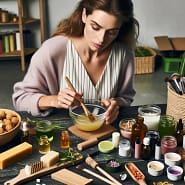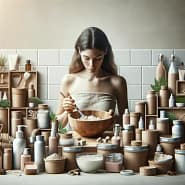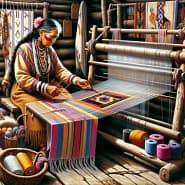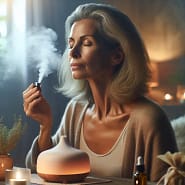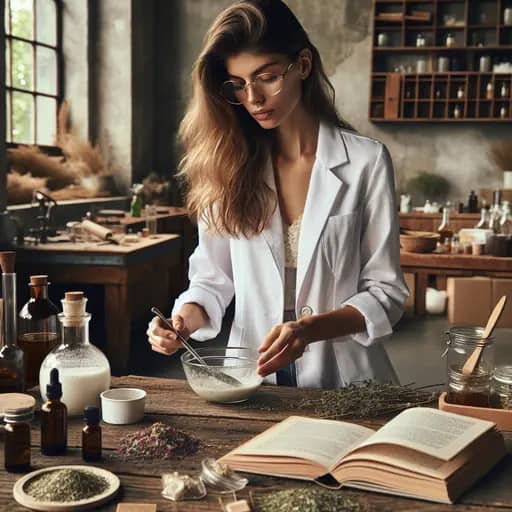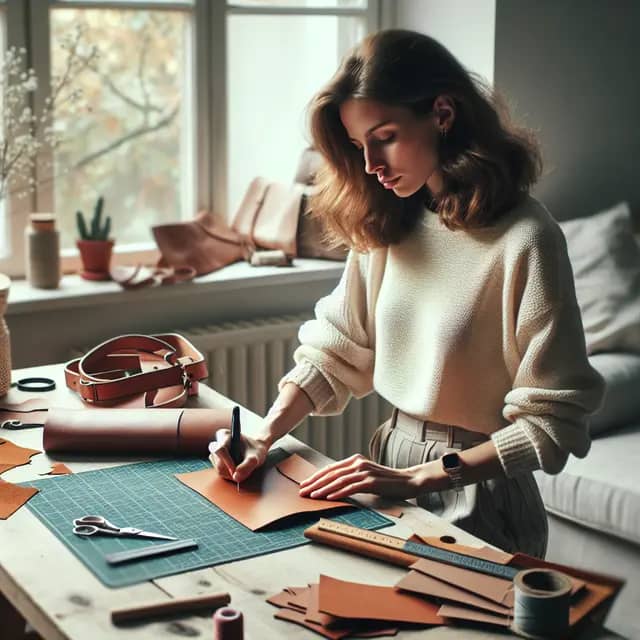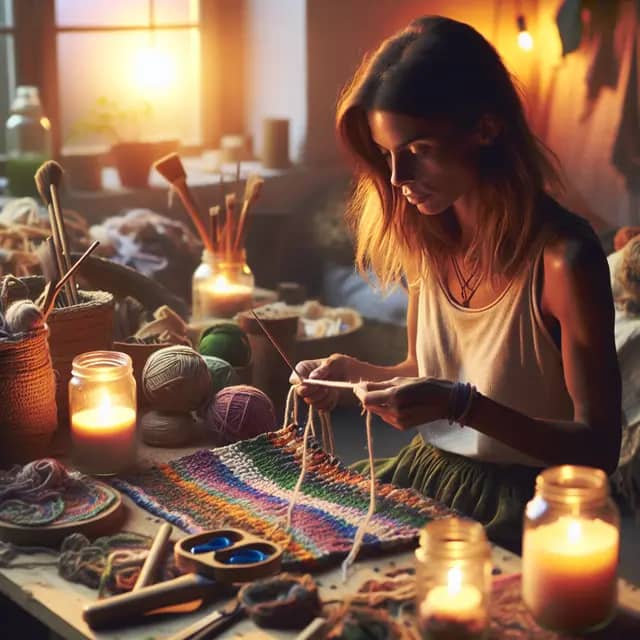Introduction: The Benefits of Making Your Own Beauty Products at Home
The concept of creating one’s personal cosmetics and skincare items is an attractive prospect for beauty enthusiasts worldwide. When you build your own beauty products at home, you not only have complete control over what goes onto your skin but also contribute towards making environmentally conscious choices. This article will delve into why making DIY beauty products is an avenue deserving of exploration.
The Major Benefits
- Cost-Effective: Preparing your own beauty products can save you money in the long run. Many of the ingredients used are household items, making them affordable and readily available.
- Safe and Natural: With home-made beauty products, you’ll know exactly what you’re applying to your skin. This cuts out the risk of using products with harmful chemicals, and allows personalization to avoid potential allergens.
- Environment Friendly: Hand-crafted beauty products contribute less to plastic pollution since home storage tends to be reusable. Plus, you’ll minimize waste by making only what you require.
- Creativity Booster: Crafting beauty products offers an opportunity to experiment and personalizes them to match your preferences. The process can be fun-filled and mentally stimulating.
Through the course of this article, we will guide you through everything you need to know about making your own beauty products at home. From choosing the right ingredients and necessary tools, through safety precautions to popular recipes you can try, you will discover how easy and rewarding this endeavor can be.
Get ready to embrace the joy and benefits of DIY beauty product making as we take a journey into this world of personal care and creativity. Knowing what goes onto your skin and personalizing your products to suit your skin type and preferences hasn’t ever been simpler—see for yourself!
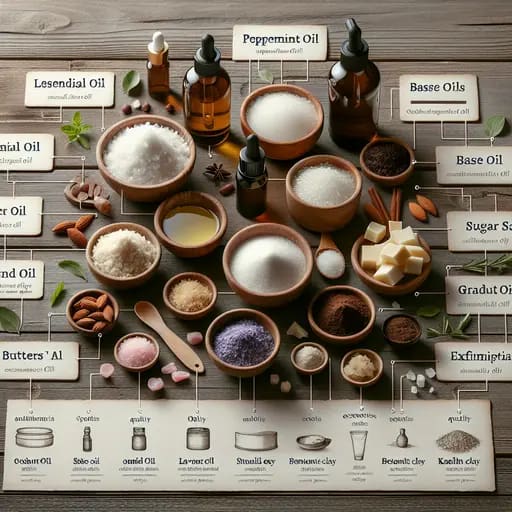
Choosing the Right Ingredients for your DIY Beauty Products
When you decide to build your own beauty products at home, one of the most crucial steps is selecting the appropriate ingredients. The ingredients chosen will not only determine the product’s effectiveness, but also its safety and compatibility with your skin type. In this section, we will guide you through the process of picking the right ingredients for your DIY beauty products.
Here are the key factors to consider:
- Quality: Invest in high-grade, organic, and natural ingredients whenever possible. Products made from such ingredients are generally safer for the skin and provide better results.
- Properties: Each ingredient has its unique properties. You need to understand these properties to know the benefit each ingredient will impart on your DIY beauty product. For instance, shea butter is moisturizing whereas tea tree oil has antimicrobial properties.
- Skin type: Consider your skin type while choosing ingredients. Certain ingredients are better suited for oily skin (like witch hazel), while others are better for dry skin (like cocoa butter).
- Storage life: Ingredients with longer shelf lives are more suitable for DIY beauty products because they increase the product’s overall lifespan.
Now that you are clear about what to look for in your DIY beauty product ingredients, let’s look at some of the most popular categories of ingredients used in homemade beauty products.
- Essential oils: They possess a variety of therapeutic properties and provide natural fragrance. Examples include lavender oil, peppermint oil, and tea tree oil.
- Base oils: These are used as carriers for essential oils. They are generally nourishing and provide moisture. Examples include coconut oil, almond oil, and olive oil.
- Butters: They contribute to the consistency of products and provide intense hydration. Examples include shea butter and cocoa butter.
- Exfoliants: They help with the removal of dead skin cells. Examples include ground coffee, sugar, and sea salt.
- Natural clays: These are often used in face masks for their detoxifying properties. Examples include bentonite clay and kaolin clay.
By thoughtfully choosing your ingredients, you can create effective, high-quality DIY beauty products that cater specifically to your skin’s needs. In our upcoming sections, we’ll delve deeper into the types of tools and safety precautions required for beauty product making at home, popular DIY Beauty recipes to try, and much more. Stay tuned!
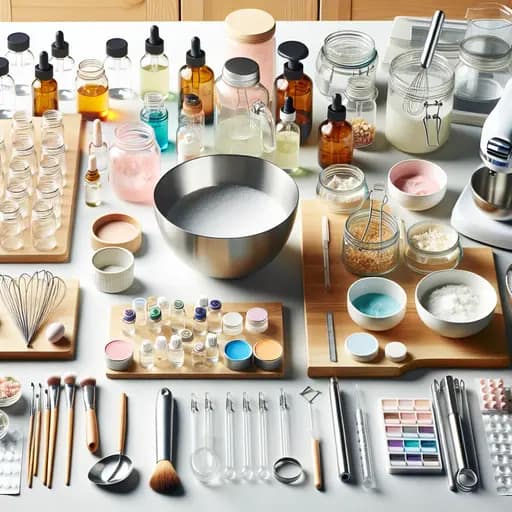
Essential Tools and Equipment Needed for DIY Beauty Product Making
In your journey to build your own beauty products at home, it’s not just the ingredients that count. Having the right tools and equipment also plays a crucial role in the effectiveness of your DIY beauty recipes. Let’s explore the essential tools and equipment you will need to streamline your DIY beauty product making process:
- 1. Glass Mixing Bowls: Glass is the preferred material because it doesn’t react with ingredients, ensuring the purity of your concoctions.
- 2. Measuring Cups and Spoons: Precise measurements are key to successful DIY beauty products. Investing in a set of measuring cups and spoons is a must.
- 3. Hand Mixer: This tool helps to thoroughly combine your ingredients to create a smooth and even consistency. A good hand mixer can be a game-changer in your DIY beauty product making process.
- 4. Cosmetic Jars and Bottles: You’ll need containers to store your homemade beauty products. Opt for glass or BPA-free plastic to keep your products safe and secure.
- 5. Pipettes or Droppers: These are essential for accurately adding smaller amounts of liquid ingredients, ensuring the quality of your beauty products.
- 6. Heat-Proof Containers: For recipes requiring heated ingredients, these containers are vital. They provide safe and efficient heating without causing any damage to your beauty product.
- 7. Labels: Clear, adhesive labels are crucial for effective organization and identification of your homemade beauty products.
With the right tools and equipment, creating your DIY beauty products can transform from being a messy trial-and-error process into a seamless, enjoyable experience. Remember, the purpose of making your own beauty products at home is to create something that’s precisely crafted to meet your personal skin care needs, all while having fun in the process.
Stay tuned for further exciting topics, such as understanding the safety precautions to consider and organically-rocking beauty recipes to try when making beauty products at home.
One step at a time, and you’ll become a master in the art of DIY beauty product making!
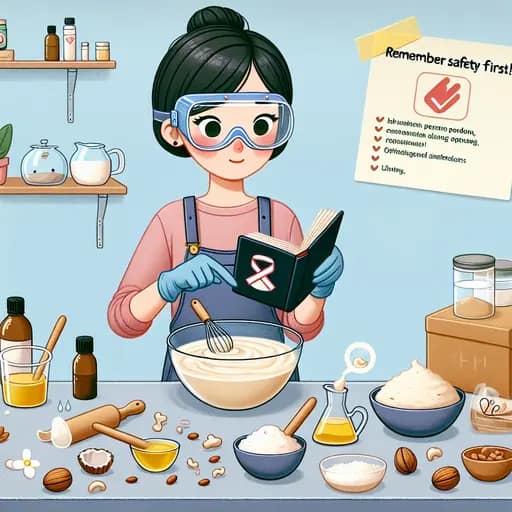
Safety Precautions to Keep in Mind When Making Beauty Products at Home
When it comes to creating your own homemade beauty products, safety should always be your top priority. While DIY beauty product creation can be fun and rewarding, it’s critical to remember that you are working with ingredients that can potentially harm your skin if not handled correctly. To safeguard your skin and health, follow these safety precautions when making beauty products at home:
- Understand Your Ingredients: Before adding any ingredient to your DIY beauty recipe, conduct proper research about its safety and potential side effects. Especially be cautious about using potent ingredients like essential oils which should always be diluted.
- Use Correct Quantities: Always follow a tried-and-tested recipe, especially when you’re starting out. Using too much or too little of any ingredient can lead to ineffective results, or worse, skin irritation or damage.
- Wear Protective Gear: To protect your skin and eyes, wear gloves and safety goggles. Especially when working with ingredients that can cause irritating vapors or messy spills.
- Use Clean Equipment: Avoid bacterial contamination by ensuring your tools and equipment are clean and properly sterilized before use. You don’t want any unwanted bacteria in your homemade beauty products.
- Be Mindful of Allergies: Always be aware of your own or others’ potential allergies. Some common allergens include certain types of oils, nuts, and fruits.
- Test It Out: Before applying any DIY beauty product to your face or body, test it on a small patch of skin to check for potential reactions or irritations.
Remember, safety first when it comes to making beauty products at home. With these precautions in mind, you can confidently create and enjoy your homemade beauty products. Have fun experimenting with different DIY beauty recipes, knowing that you’re creating something safe and suitable for your skin.
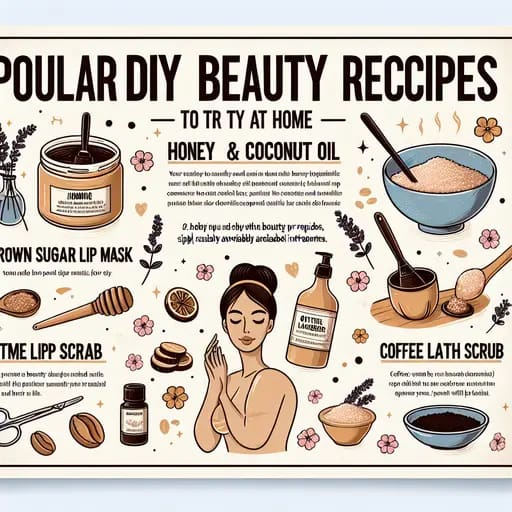
Popular DIY Beauty Recipes to Try at Home
Building your own beauty products at home not only allows you to control the ingredients that you put on your skin but also offers a unique DIY experience that is both fun and creative. Here, we’ve gathered a compilation of popular, easy-to-make DIY beauty recipes that you can try at home:
- 1. Honey and Coconut Oil Face Mask: This simple two-ingredients face mask provides deep hydration and brightens your complexion.
- 2. Brown Sugar Lip Scrub: Brown sugar is a great natural exfoliant. Mix it with a bit of honey and olive oil for a nourishing lip scrub.
- 3. Oatmeal Lavender Bath Soak: An ideal solution for those stressful days, this bath soak will calm your nerves and soothe your skin.
- 4. Coffee Grounds Cellulite Scrub: Gentle exfoliation combined with the caffeine boost from coffee can help to reduce the appearance of cellulite.
Each of these DIY beauty recipes can be created with ingredients that you might already have in your pantry, proving that DIY beauty doesn’t have to be complicated or expensive. When it comes to making your beauty products, simplicity is key.
Moreover, these recipes can be customized to suit your preferences and skin needs. For instance, if you have dry skin, the Honey and Coconut Oil Face Mask can be enriched with a few drops of vitamin E oil for added moisturizing benefits.
Creating beauty products at home gives you the freedom to experiment with different formulations until you find what works best for you. So don’t be afraid to try these recipes and modify them as needed. After all, the beauty of DIY is in its ability to be tailored exactly to your liking.
In the next section, we’ll delve deeper into how you can customize your beauty products to match your skin type and preferences. Look forward to discovering how you can enhance your DIY beauty product making experience further!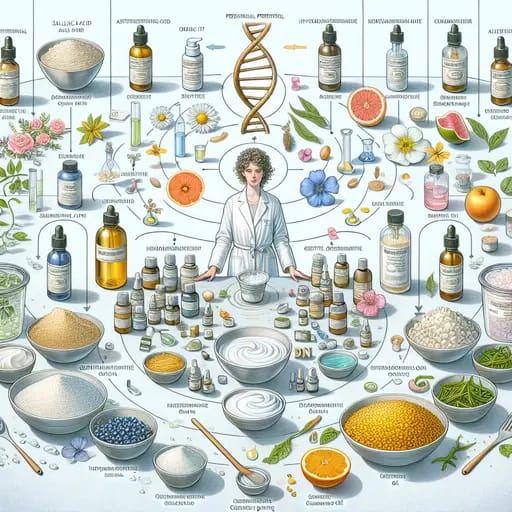
Customizing Your Beauty Products to Suit Your Skin Type and Preferences
When it comes to homemade beauty products, one major advantage is the ability to customize them to suit your individual skin type and preferences. With some simple tweaks to your DIY beauty recipes, you can create products that are uniquely tailored to your skin’s needs. Let’s explore how you can do this.
Identify Your Skin Type
The first step to customizing your beauty products is understanding your skin type. Typical skin types include:
- Oily skin: These skin types benefit from astringent ingredients like witch hazel or salicylic acid.
- Dry skin: Ideal for this skin type are hydrating ingredients such as hyaluronic acid and aloe vera.
- Combination skin: This is where your skin is dry in some areas and oily in others. Use a mix of the ingredients mentioned above.
- Sensitive skin: If your skin is prone to react, choose gentle ingredients like oatmeal or chamomile.
- Mature skin: Ingredients like sea buckthorn oil or rosehip oil are beneficial as they are packed with antioxidants.
Know Your Preferences
Your beauty products should not only cater to your skin type but also reflect your personal preferences. Here are some aspects to consider:
- Fragrance: Essential oils can be used to add a personal touch to your DIY beauty products. For instance, if you love refreshing scents, try adding grapefruit or peppermint oil to your recipes.
- Texture: The feel of the product on your skin matters. You might prefer a creamy moisturizer over a lightweight one, or a rough scrub compared to a gentle exfoliant.
- Effectiveness: Your DNA has a major influence on your skin’s behavior. If your skin doesn’t respond well to a certain ingredient, feel free to leave it out.
Ultimately, the beauty of making your own products at home is that it allows you to experiment with different ingredient combinations until you find what works best for you. With DIY beauty, the power is in your hands to define what beauty means to you and express it through your personalized products.
Now that you understand how to tailor your DIY recipes, let’s delve into some popular DIY beauty recipes to try at home in the next section of our guide.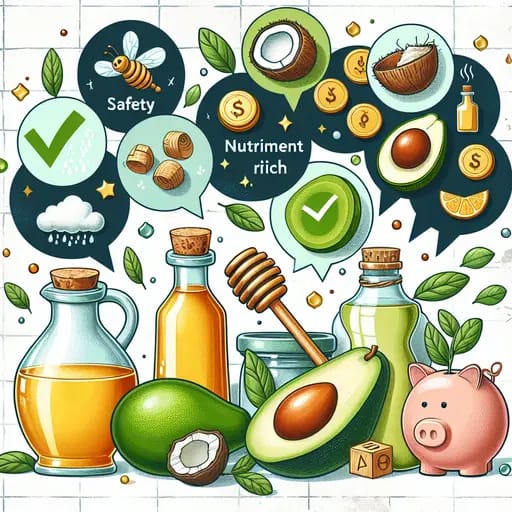
Benefits of Using Natural Ingredients in Your Homemade Beauty Products
When you ‘Build Your Own Beauty Products at Home’, it’s not just about having fun, it’s also a surefire way to ensure that what you use on your skin is natural, safe and full of the goodness that nature provides. In this section, we shall explore the benefits of utilizing natural ingredients in your homemade beauty products.
- Safety: With natural ingredients, you minimize the risk of skin irritation and adverse reactions commonly associated with synthetic substances. Nature offers a bounty of safe, non-toxic ingredients with incredible beauty benefits.
- Nutrient-Rich: Fruits, vegetables, herbs, and oils are packed with vitamins, antioxidants, and beneficial compounds that nourish your skin and improve its health.
- Eco-Friendly: By using natural ingredients, you are contributing towards a healthier planet. It’s a step away from the harmful chemicals that find their way into our environment.
- Cost-Effective: Many natural ingredients used for DIY beauty products are affordable and readily available in your kitchen.
Here’s a taste of some of the best natural ingredients to include in your homemade beauty products:
- Honey: A natural humectant, honey helps hydrate the skin and is rich in antioxidants.
- Olive oil: Packed with anti-aging antioxidants and hydrating squalene, making it superb for hair, skin, and nails.
- Coconut Oil: Known for its antibacterial and antifungal properties, coconut oil is an excellent moisturizer and ideal for DIY beauty products.
- Avocado: Rich in vitamins A and E, and omega-3 fatty acids, avocado has superb moisturizing properties.
Remember, when you create your own beauty products, you’re not just pampering your skin, you’re nourishing it. So why not infuse these beneficial natural ingredients into your beauty routine? The benefits can be remarkable.
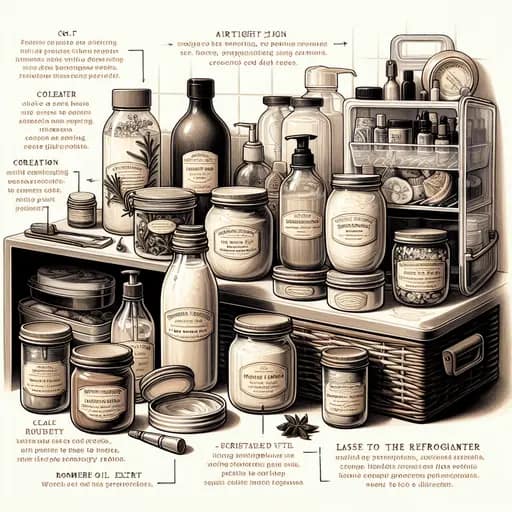
Tips for Storing and Preserving Your DIY Beauty Products
Now that you’ve crafted your custom beauty products, it’s crucial that you properly store and preserve them. Effective storage not only keeps your DIY beauty products fresh, but it also prolongs their usability, safekeeping their skincare benefits. Below are some top tips detailed to help you store these ‘beauty treasures’ correctly:
- Use Proper Containers: Store your DIY beauty products in clean, dry containers. Glass jars with airtight lids are a standard choice for creams, lotions, and masks. Avoid plastic as some ingredients can react with it.
- Store in Cool, Dark Places: Exposure to heat and light can degrade your product’s quality. A bathroom cabinet or a makeup drawer is an ideal spot to keep them away from sunlight and humidity.
- Refrigerate When Needed: Some products, particularly those with fresh ingredients or without preservatives, may require refrigeration.
- Label your Products: Write down what’s in the container and the date you made it. This way, you’ll ensure to use the product while it’s still good and avoid any potential skin irritations from expired ingredients.
- Pay Attention to Shelf Life: Homemade beauty products don’t last as long as store-bought ones due to a lack of preservatives. Keep this in mind and aim to use up products within their ideal timeframe.
Preservation in DIY beauty products is just as necessary as in any food product. Here are some tips on how to preserve the products you create:
- Keep Everything Clean: Use clean utensils when making your product. Any bacteria present can shorten the lifespan of your creations.
- Use Natural Preservatives: While most homemade goods lack artificial preservatives, natural options like rosemary oil extract can help. Remember to add these to your ingredient list.
- Toss Out Anything Suspicious: If your product has changed color, smells off, or has mold, throw it out immediately. It’s always better safe than sorry when it comes to the health of your skin.
In summary, proper storage and preservation are key to maximize the benefits and lifespan of your homemade beauty products. By following these tips, you’ll ensure that you get to enjoy your personalized skin treats for as long as possible.
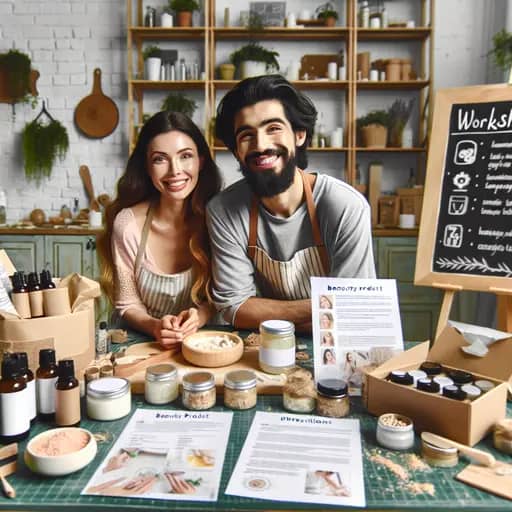
Sharing Your Homemade Beauty Products with Friends and Family
Nothing quite compares to the joy of gifting your loved ones with your handcrafted items, complemented with light-hearted intimacy and affection. In the same way, sharing your homemade beauty products can create bonds and inspire your friends and family to take control of their beauty regimen. In this section, we’ll highlight the ways you can share your newly discovered DIY beauty product-making skills.
Host a Beauty Product-Making Party
Throwing a party is a fun way to share your DIY beauty product creations. Here’s how:
- Reserve a day when most of your friends and family are available – perhaps a weekend or holiday.
- Prepare kits with needed materials ahead of time.
- Provide a selection of various recipes which cater to different skin types and preferences.
- Take them step-by-step through the process, turning a complex-looking process into a straightforward and engaging activity.
Gift Them with Your DIY Beauty Products
A tastefully packaged DIY beauty product can make a perfect gift for any occasion. Remember to:
- Personalize the product according to the recipient’s preference and/or skin type.
- Include a handwritten note detailing the ingredients and benefits of the product. This thoughtful touch will definitely be appreciated!
- Ensure your packaging is not just attractive but also functional, keeping the product safe and fresh.
Craft Workshops or Tutorials
If you feel confident enough and have honed your skills, consider organizing a workshop or making easy-to-follow online tutorials. This can be an inspiring way to share the value and satisfaction that comes from making homemade beauty products.
With just a little creativity and organization, sharing your DIY beauty products can be as rewarding as making them. Not only do you get to pass on the benefits and knowledge of DIY beauty, but you also boost your personal ties with the people you care about.
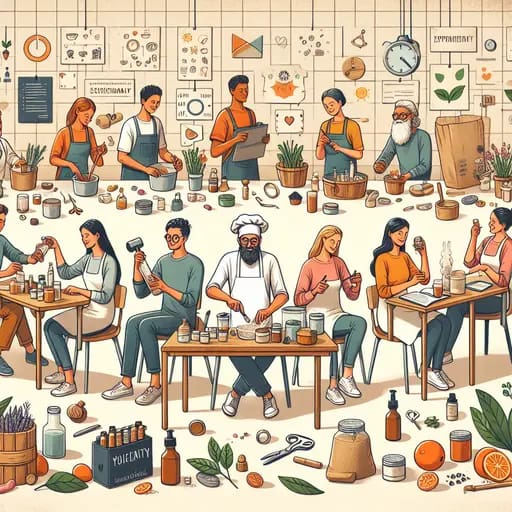
Conclusion: Embracing the Art of DIY Beauty Product Making
Embracing the art of DIY beauty product making is a journey that enriches your understanding of health, beauty, and creativity. Having navigated through the process of choosing right ingredients, understanding the essential tools and safety precautions, trying popular recipes, customizing your products, and even sharing them with friends and family, you are now equipped with the knowledge to construct and control your own beauty regimen.
- Freedom of Choice: In making your own beauty products at home, you have the liberty to use ingredients that cater to your skin type and preferences.
- Purity and Quality: With the ability to hand-pick each ingredient, you can ensure the products consist of pure, quality ingredients with no harmful chemicals.
- Cost-Effective: Making your own beauty products can be significantly more affordable than high-end commercial brands. You can create products that are equally functional, if not more, without burning a hole in your pocket.
- Unleash Creativity: DIY beauty product making provides a platform to explore and express creativity. Each product becomes an exclusive original, embedded with a part of your creative identity.
- Environmentally Friendly: The DIY approach promotes an eco-friendly lifestyle. By minimizing the usage of commercial products, you help reduce the environmental impact of plastic packaging.
Encourage family and friends to try out your creations, and share your newfound knowledge with them. This not only promotes a healthier lifestyle but also takes a step towards building an eco-conscious community.
In a nutshell, the world of DIY beauty products is a journey into a self-sustaining lifestyle, a showcase for creativity, and a healthier alternative to mass-produced beauty conquests. It’s about taking charge, making informed choices, and cultivating a beauty routine that’s uniquely yours.
With this, you have reached the end of “Build Your Own Beauty Products at Home.” It’s time to bid adieu to the store-bought products, and, instead, embrace and revel in the art of DIY beauty product making. With trial and practice, you will master the craft, and soon, there will be no looking back.
